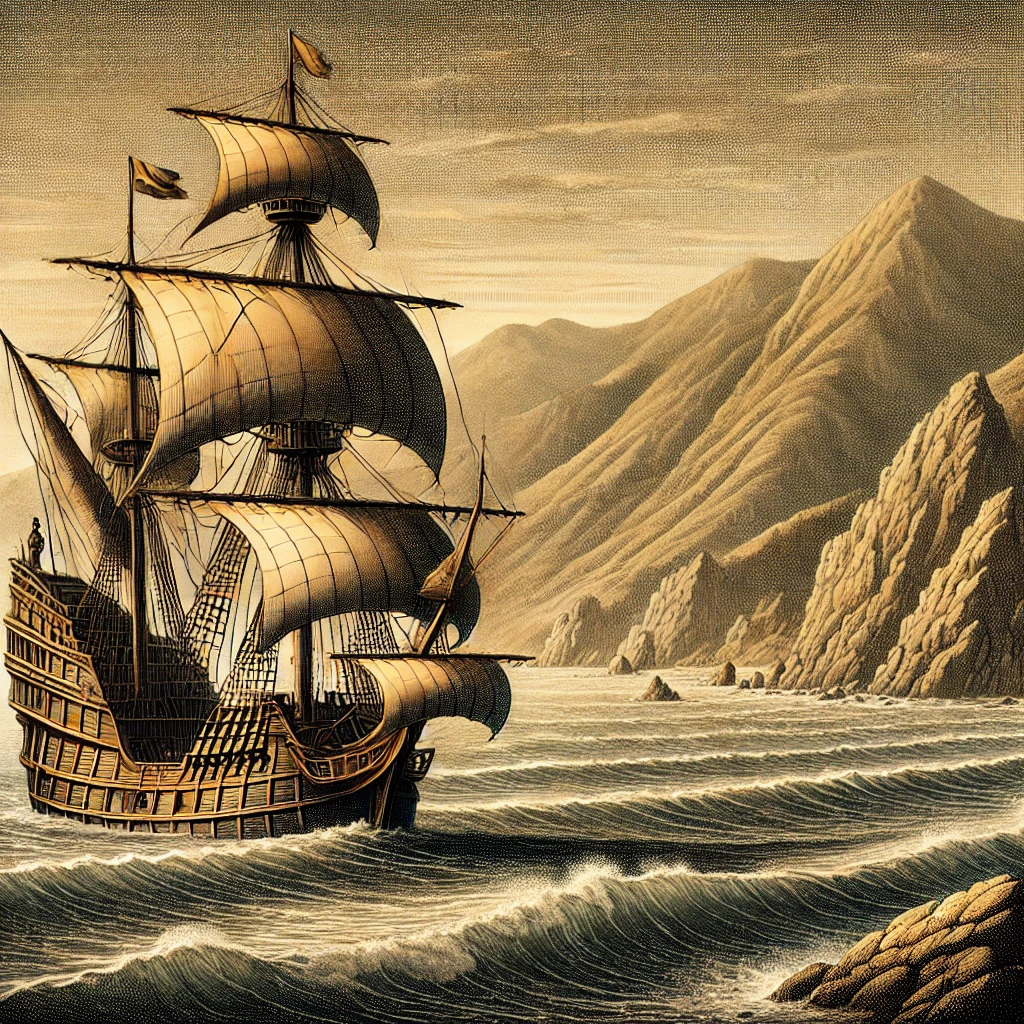On September 28, 1542, Spanish explorer Juan Rodríguez Cabrillo made history by landing on the shores of present-day San Diego, California. This momentous event marked Cabrillo as the first European to set foot on the west coast of what would later become the United States. His exploration opened the door to further European interest and eventual colonization of the region, significantly shaping the course of California’s history.

The Context of Cabrillo’s Voyage
Cabrillo’s expedition was commissioned by the Spanish crown, which sought to explore and claim new territories in the Americas. As part of his mission, Cabrillo sailed northward along the Pacific coast from Mexico, motivated by the promise of discovering new trade routes and expanding Spanish influence. His journey was emblematic of the broader Age of Exploration, a period characterized by European nations competing for territorial dominance and resources in the New World.
The significance of Cabrillo’s expedition lies in its timing and context. By the early 16th century, European powers were increasingly interested in the Pacific coast, driven by the potential for wealth and resources. Cabrillo’s landing represented a pivotal moment in this exploration, as it laid the groundwork for future expeditions and the eventual establishment of Spanish missions and settlements in California.

The Landing at San Diego
When Cabrillo and his crew arrived in San Diego Bay, they were met with the indigenous Kumeyaay people, who had inhabited the area for thousands of years. Cabrillo’s landing marked the beginning of European interaction with California’s native populations, a relationship that would be fraught with tension and conflict in the years to come. While Cabrillo initially sought to establish friendly relations, the complexities of colonization soon emerged.
Cabrillo’s exploration of the California coast led him to document various geographic features, potential settlement sites, and native cultures. His journal entries and maps provided valuable insights for future explorers and settlers, contributing to European understanding of the region. Although Cabrillo did not establish a permanent presence in California, his voyage set the stage for the subsequent influx of Spanish missionaries and settlers.
The Legacy of Cabrillo’s Exploration
Cabrillo’s expedition had lasting implications for California and the broader history of the United States. His arrival in 1542 is often viewed as the beginning of European exploration of the California coast, leading to further expeditions by notable figures such as Sebastián Vizcaíno and later Spanish settlers. The legacy of Cabrillo’s journey is commemorated today, with Cabrillo National Monument established in San Diego to honor his contributions to exploration.

The interactions between Cabrillo’s crew and the indigenous peoples of California laid the groundwork for a complex and often tragic history of colonization. The arrival of Europeans marked the beginning of significant changes for native populations, including the introduction of new diseases, cultural disruptions, and land disputes. These consequences continue to resonate in discussions about indigenous rights and cultural preservation today.
Modern Commemorations and Cultural Impact
Today, Cabrillo’s landing is celebrated as a key moment in California’s history. The Cabrillo National Monument serves as a site of education and remembrance, highlighting the explorer’s contributions while also acknowledging the impacts of colonization on indigenous communities. Visitors to the monument can explore the area’s natural beauty, learn about Cabrillo’s voyage, and reflect on the complex history that followed.
The landing of Juan Rodríguez Cabrillo on September 28, 1542, represents a significant milestone in the history of California and the broader narrative of European exploration in the Americas. His voyage marked the beginning of European awareness of the Pacific coast and initiated a series of events that would shape the region’s future. As we reflect on Cabrillo’s legacy, we are reminded of the complexities of exploration, colonization, and the ongoing impact of these historical moments on contemporary society. The significance of Cabrillo’s journey endures, serving as a touchstone for understanding California’s rich and diverse history.
